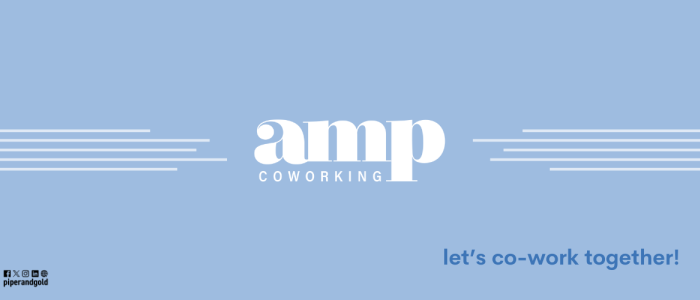
Written by: Cassie Cotton and Kendall McCarthy
Community engagement is not just a buzzy phrase or another box for a business to check on a corporate social responsibility checklist; it is a crucial function for any person or organization driven to create lasting, impactful change.
Community engagement is about working in collaboration with the groups who share an interest in and are affected by an issue or situation you are hoping to positively address. You might also refer to it as community empowerment or development, or even simply public participation or citizen engagement.
Community engagement blends science and art. The scientific aspect draws from disciplines including sociology, psychology and cultural anthropology. The creative aspect involves using understanding and skills to apply the science in a way that is suitable for the community context and the goals for engagement. You need to use the research you gather to determine the best way to communicate with the community and how you can best serve.
Piper & Gold helped support our partners at Smith Group and the city of Mason, Michigan with community engagement. The city wanted to create a master plan update to support its goal of community members seeing Mason as a place that is welcoming, charming and safe. To start, we and Smith Group hosted an activity for Mason’s Mayor, Mayor Pro Tem, City Council and Planning Commission.
Before our meeting, residents were asked to take and upload photos of Mason to go with specific prompts. At the meeting, each city leader was given a stack of photos and phrases. Some photos were of Mason and some were stock photos. Large Post-It notes with phrases that describe “small town charm” were set up around the room. Participants walked around the room and taped photos and phrases from their stack that represent the different words and phrases onto the Post-Its. There was also a “What are we missing?” board that participants could add to.
Next, the team facilitated a conversation about why they chose the photos they did, and why the board they placed a sticker on resonated most with them. Then, the participants voted again on the board that resonated the most with them with their second sticker to see if the discussion changed their minds. Finally, we hosted a conversation about local stakeholders and asked the city leaders who was missing from the conversation.
Armed with this knowledge, the Mason team conducted a survey of current residents that asked what these characteristics meant to them and their thoughts on different aspects of Mason. Mason’s City Council and Planning Commission distributed more than 16,000 survey invitations through postcards, Facebook posts, organization newsletters, emails and personal calls, and we received 1,442 responses. This research was the “science” part of our work.
The “art” of this work was left to Mason’s leaders as they created the master plan update. We equipped city leaders with our research findings and told them what it means to their community members to see Mason as welcoming, charming and safe.
While community engagement can be complex and demanding in terms of resources such as time and funding, it is an important element for leaders to consider if they want to strengthen understand and empower communities. Effective strategies require a good understanding of the best tools, techniques and information available.
But why is community engagement so important for organizations?
Community engagement builds trust.
If you want the community to believe in your ability to plan for their future, you need to build trust. According to Edelman Trust research, there's a widening gap between the people who are well-informed and those who aren't when it comes to trusting public institutions. People trust each other more than information from the top.
Community engagement helps institutions share accurate info with their best-networked members. In simpler terms, the more the community knows and is involved, the more likely they are to trust the institution. Trust can be hard to come by in many communities, and community engagement is a key way to build and strengthen trust.
Community engagement leads to better decisions.
By involving your community from the start of the project, you'll make better decisions and avoid potential problems down the road. Think about it: Your community knows things you may never know unless they tell you.
There will always be ideas, issues, concerns, history and context that you don’t know about that can affect your project. Community members know, understand and live with these variables. Community engagement will also help you build a stronger understanding of the project and steer clear of any political obstacles that could delay your progress.
Community engagement creates a happier and more satisfied community.
When people feel like they have a say and are kept in the loop, they're more likely to think you're doing a great job. Engaging with the community increases transparency and accountability and gives folks the chance to shape the things that affect their lives. When the community feels like they're part of the process, they're usually more satisfied.
Community engagement creates buy-in.
Consensus is a rare thing in community engagement. Most likely, you will be forced to make a recommendation that some people like, but others do not.
To get the community on board with your recommendation, make sure you've taken into account their needs and perspectives during the decision-making process. Even if you can't give them exactly what they want, showing them the reasoning behind your choice will help them understand and accept it. Communication and transparency are key.
Community engagement develops sustainable solutions.
When you take your community’s experiences into consideration, your approach will be more politically sound. This means it will be less likely to face legal opposition, changes during final approval, or a repeal once new officials take office. Community involvement may not always require extensive resources or time, but it plays a crucial role in ensuring success and avoiding potential roadblocks.
How do we effectively engage with our communities? It’s as simple as listen, lead, connect. You need to listen to understand the needs of the community and how they may be different from or aligned with the goals of your organization. You can lead by examining your circles of influence and identifying voices that need to be heard. Finally, you can connect those in the community with government officials and the media to ensure their stories are heard. Stay tuned for a series of blog posts where we’ll break down each of these steps in the coming weeks.
Community engagement isn’t just trendy; it’s essential if you want to do work that makes an impact.



